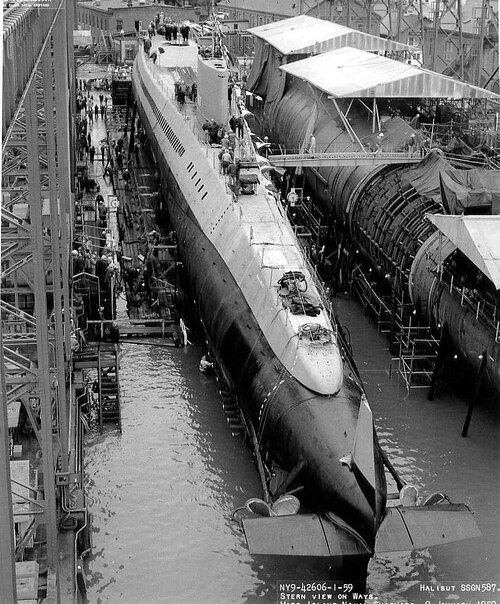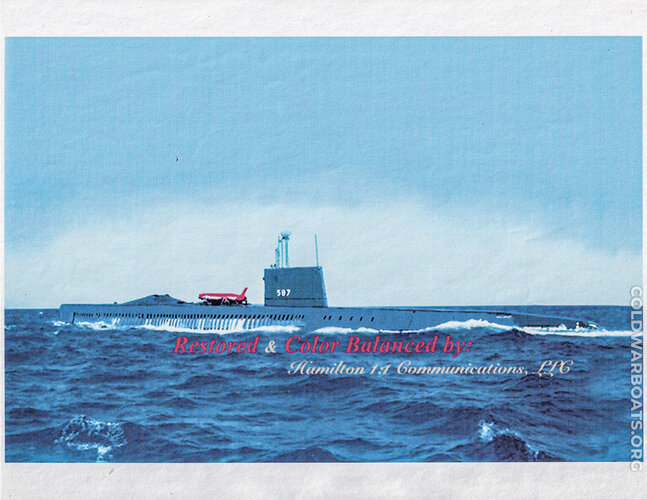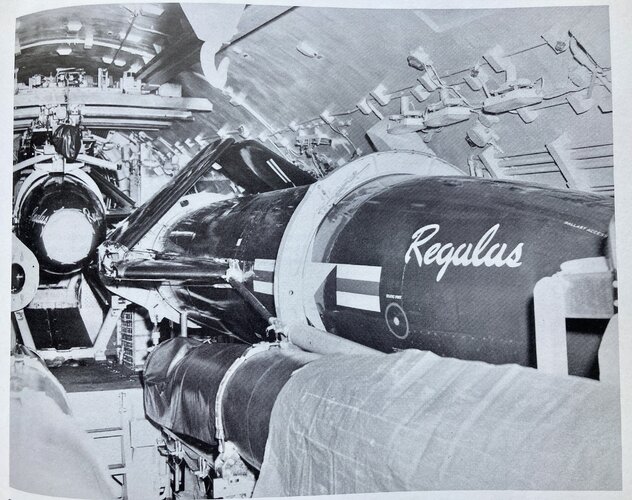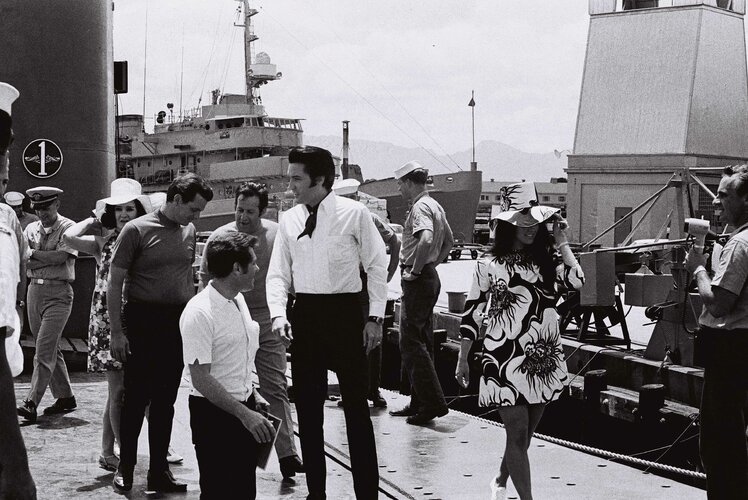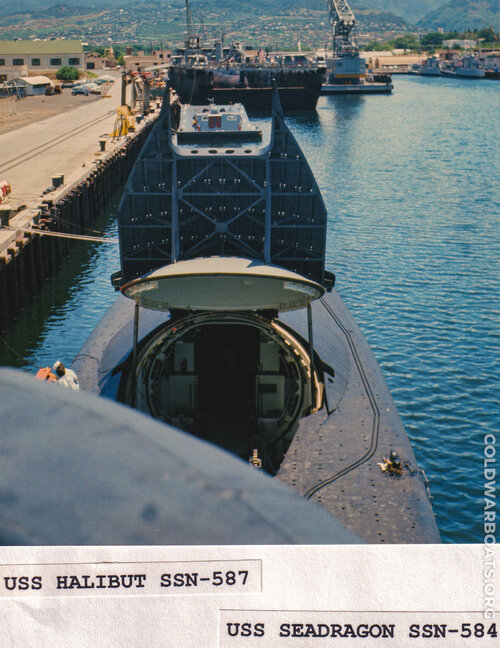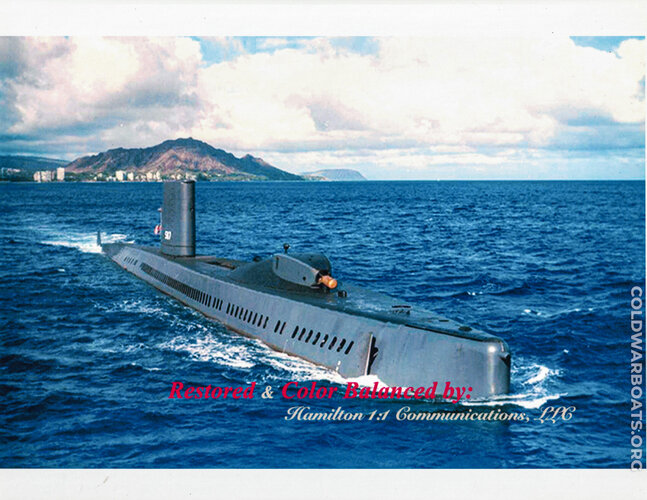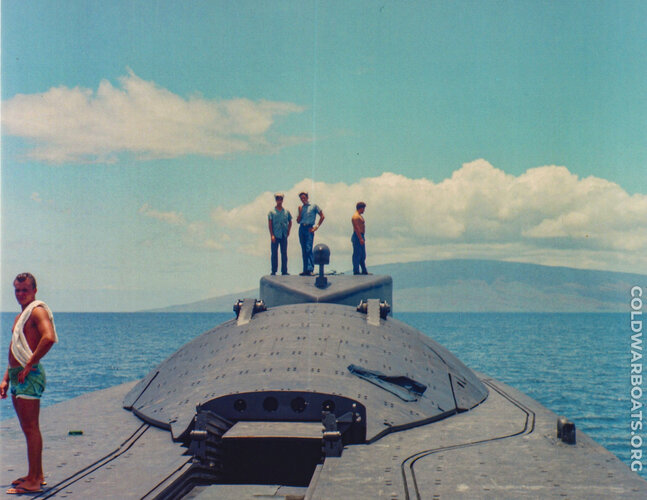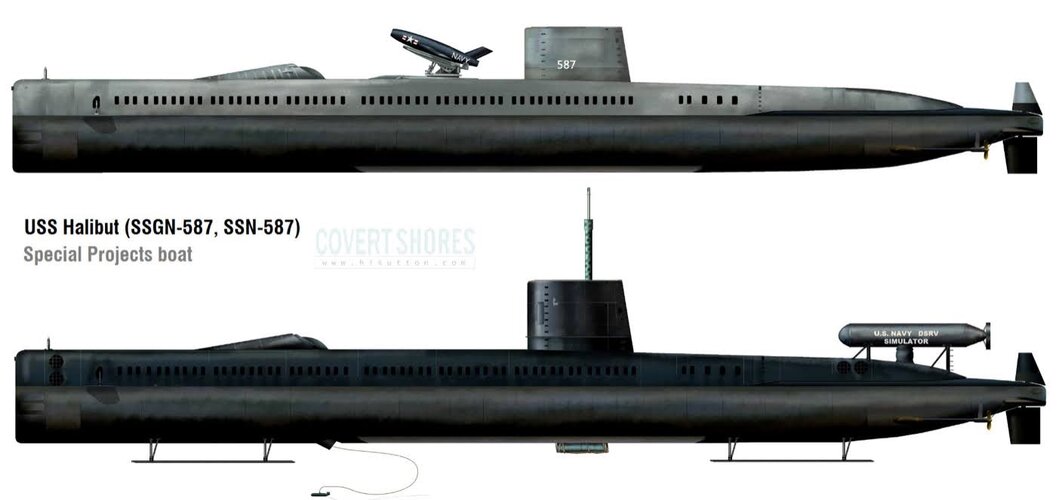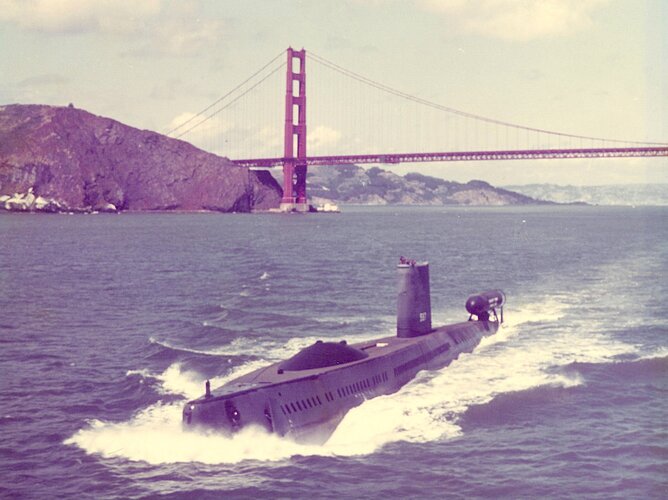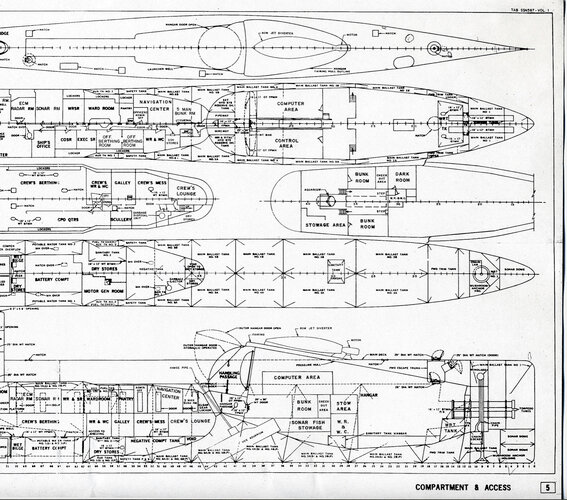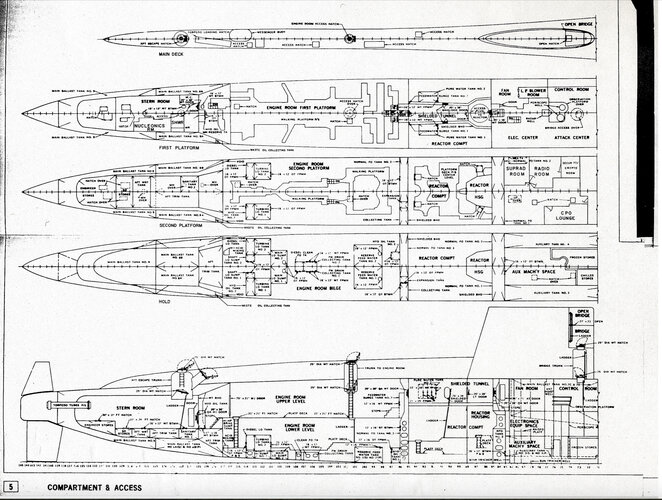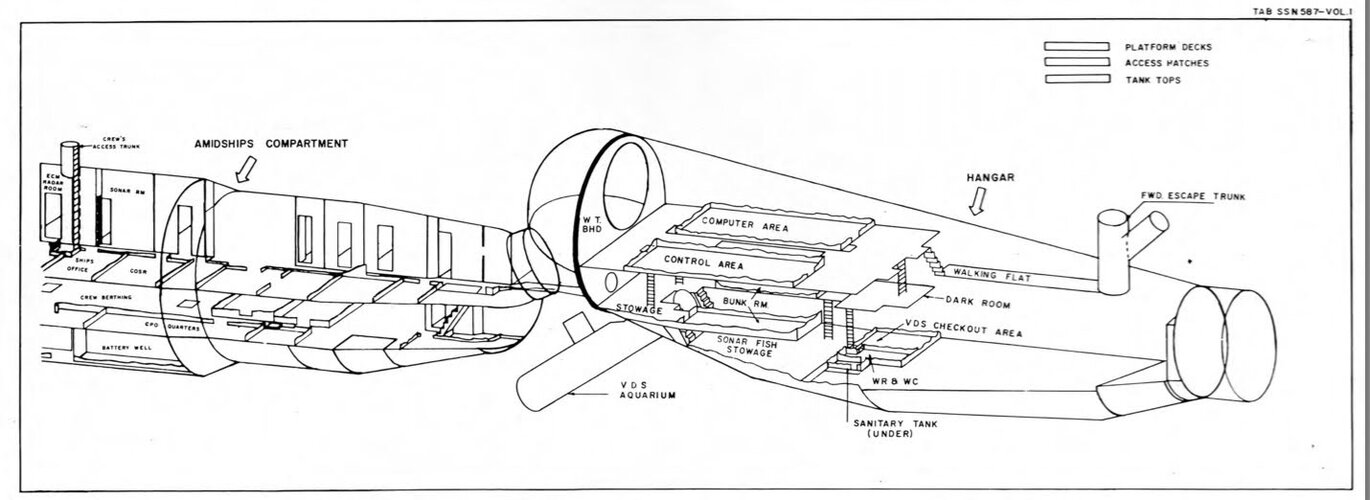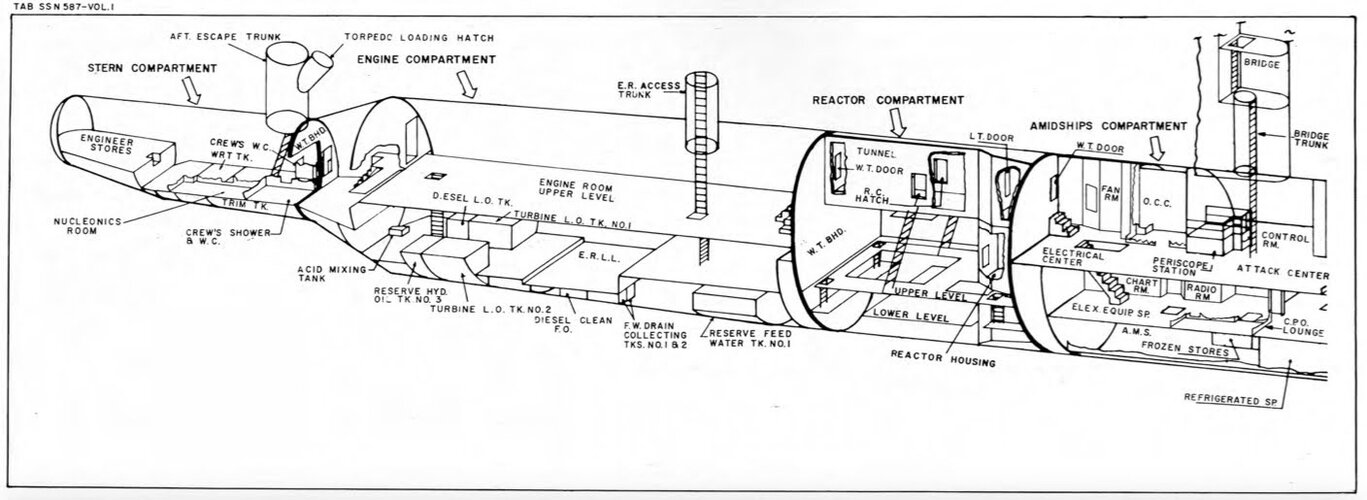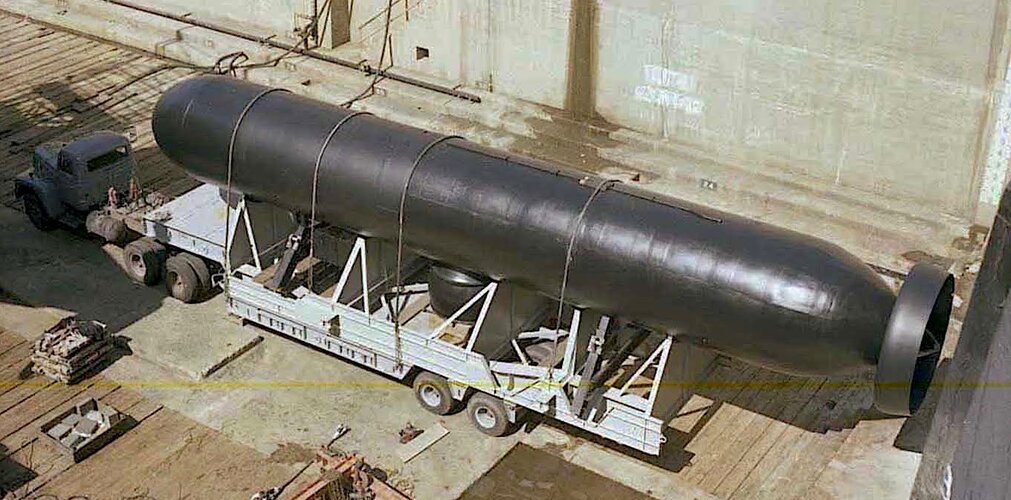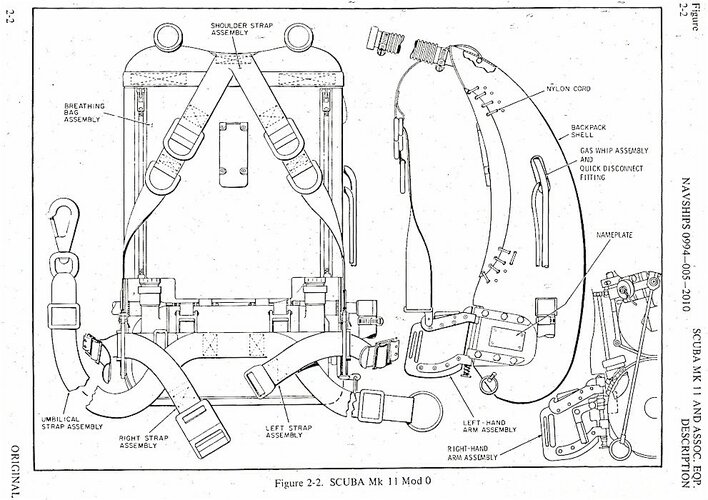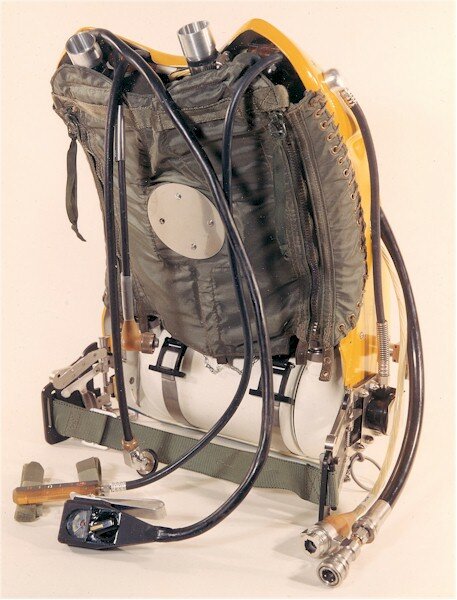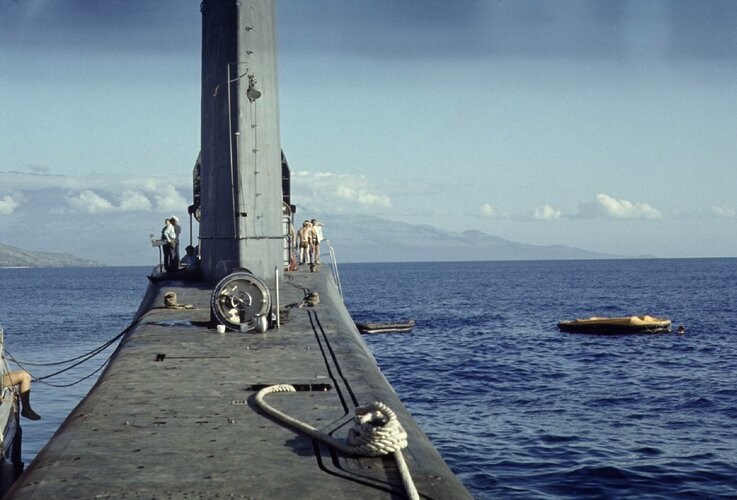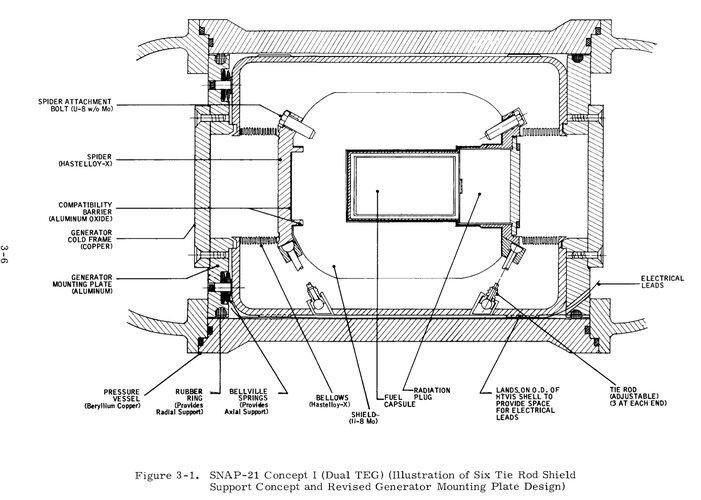Some details about Halibut. Early photos in the Regulus SSGN configuration. At that point, the original sail was low. The hanger section could store multiple Regulus I missiles, and was sized to also take lower numbers of the larger Regulus II. Halibut was a derivative of the Skate class design and had a Skate SW3 reactor of lower power (roughly 1/2) compared to the Nautilus S2W plant. Halibut was always viewed as a one off conversion of a Skate class plan. Even if the Regulus missile program had continued, a very different new design for subsequent SSGNs was developed. The low sail was later replaced with a higher sail, as Regulus launches generated excess exhaust. Cancellation of Regulus II limited the lifetime of the Regulus I missile deterrence patrols as the much more capable Polaris program advanced.
In the initial Special Projects (Ocean Engineering) version, the hanger was modified and divided into decks. The lower deck housed the camera and sonar "Fish" tow bodies. Also in the lower section was the deployment tube and the towing cable reel. The Covert Shores drawing erroneously shows the cable reel outside this area, under the upper deck. But in order for the cable to provide power and transmit and receive signals from the Fish, the reel had a series of commutators and slip rings similar to an electric motor) and hence the reel had to be in a dry area. A Univac 1224 computer was in the upper deck, most probably to help with navigation calculations during a search. Halibut would deploy a grid of transponders on the ocean floor bracketing he search area. The time of arrival of the different transponder signals were used to calculate the location of Halibut in the grid. The converted hanger also had a darkroom and bunk area.
Later, (~1972) in its Ocean Engineering (Special Projects) role, Halibut also received a cylindrical chamber on its aft hatch. Misleadingly labelled "DSRV Simulator", it was actually a saturation diving chamber. Specially trained divers would enter the chamber and the atmosphere slowly changed to helium and oxygen, as well as the pressure raised to the projected working depth pressure. Breathing helium and oxygen, the divers would work at depths of at least 400-600 feet. The most famous mission was to install and service taps on Soviet Navy undersea cables and collecting missile fragments from test flights. The saturation chamber had internal compartments with living quarters at the front end. The center section had a hatch connecting to the Halibut aft hatch. Directly below the chamber in Halibut was a monitoring panel for the chamber atmosphere conditions. Divers would suit up and there was an exit at the lower aft end. Because the chamber was at a pressure equal to the surrounding sea, the bottom exit hatch could be opened without water entering the chamber. The divers also had hot water circulated for warmth, as well as the helium oxygen mix and communications lines through umbilicals. The divers wore a Mark 11 Saturation Diving system, which regulated pressure and had back up gas supplies. Also, a diagram of the SNAP-21 (System for Nuclear Auxiliary Power) deep sea radioisotope power system, that employed the heat from plutonium decay to generate electrical power by thermionics. This powered the pod cable tap for 6 month intervals between submarine "visits" to swap out the pods to retrieve the tapes of cable communications.
Halibut was decommissioned in 1976, and the saturation diving chamber transferred onto USS Parche SSN 683. Later in the mid-1980's, Parche was revamped and extended, with a new internal saturation diving chamber.




